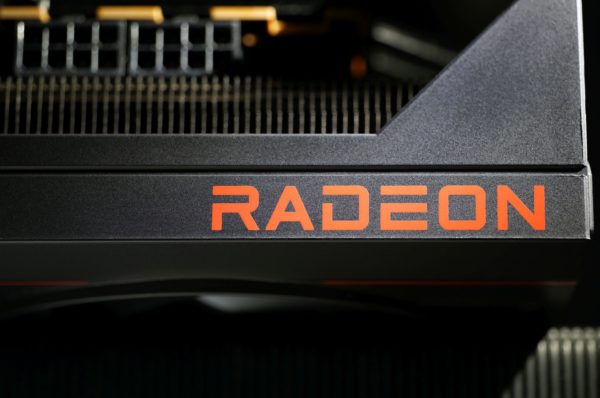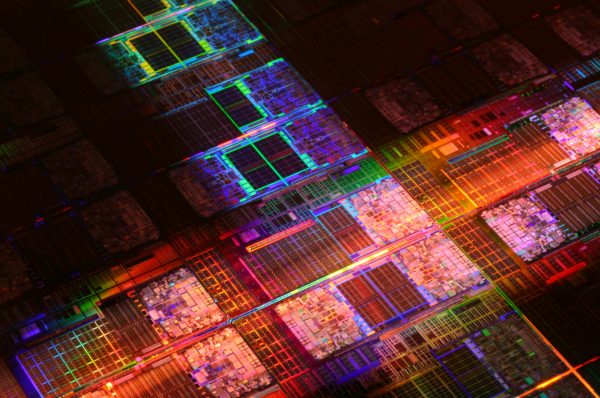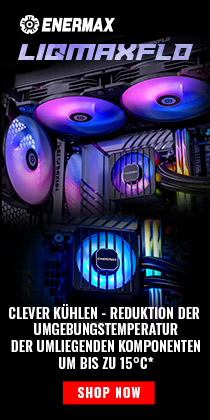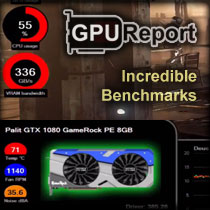Our most active readers have noticed that it’s not possible to submit comments, log in, or register on HWCooling.net. Yes, these are the current issues the website is struggling with. And they’re giving us headaches too – we definitely want to fix them as soon as possible. Of course, we’re not indifferent to the situation and are working on a solution as much as our time allows. On the “reader-only” level, everything should be fine with no major limitations. Read more “We’re aware and working on it. Technical issues on HWCooling”
DXR 1.2: New tech for better ray tracing graphics performance
Ray tracing graphics, alongside upscaling and similar “more FPS” tricks, has been the main trend in games in recent years. Although ray tracing is commonly associated with Nvidia’s RTX marketing brand, it’s actually built on the DirectX API: DirectX Ray Tracing, or DXR, which launched before GeForce RTX. This technology is now getting a major upgrade to version DXR 1.2, which will bring new capabilities as well as better performance. Read more “DXR 1.2: New tech for better ray tracing graphics performance”
AMD planning RX 9070 GRE: Cheaper RDNA 4 with 12GB VRAM?
When the Radeon RX 9070 and 9070 XT launched, AMD confirmed Radeon RX 9060 XT coming in the second quarter. That card is expected to use the Navi 44 chip with just 128-bit bus and 2048 shaders, leaving a large gap between it and the Radeon RX 9070. Lack of a 192-bit card also means no graphics that could offer an affordable option thanks to 12GB VRAM. It seems there’s a new SKU coming to fill this gap – the Radeon RX 9070 GRE. Read more “AMD planning RX 9070 GRE: Cheaper RDNA 4 with 12GB VRAM?”
GlobalFoundries & UMC Eye Merger in Chip Industry Shake-Up
In recent years, much attention has been on whether Intel can close the gap in cutting-edge chip technologies and become a true rival to TSMC. Samsung on the other hand already competes, the company is also facing mounting challenges, however. But a new challenger may be emerging for the Taiwanese king of silicon lithography: according to reports, GlobalFoundries and UMC may be exploring a merger to create a stronger competitor. Read more “GlobalFoundries & UMC Eye Merger in Chip Industry Shake-Up”
Gigabyte Radeon RX 9070 Gaming OC 16G Review: Better Pick
Graphics cards from the latest generation are still pricey, but more affordable models have become easier to find in stores. The Radeon RX 9070 Gaming OC is one of the more reasonably priced options. It uses the same cooling and board layout as the more powerful Gigabyte AMD Radeon RX 9070 XT Gaming OC, but thanks to lower power consumption, it runs cooler and quieter—making it a more compelling choice for many users. Read more “Gigabyte Radeon RX 9070 Gaming OC 16G Review: Better Pick”
Zen 5 desktop APU is coming to AM5 by the end of the year
It has been 8 months since AMD introduced the Ryzen AI 300 “Strix Point” to the market – these are the first APUs (monolithic low-power CPUs with relatively strong integrated GPUs) based on the Zen 5 architecture. Until now, it was unclear whether these CPUs would ever have a desktop version. However, reports have just emerged suggesting that processors featuring Zen 5 and improved integrated graphics are on the way. Read more “Zen 5 desktop APU is coming to AM5 by the end of the year”
MSI GeForce RTX 5090 Suprim SOC Review: 600W with Ease
The GeForce RTX 5090 is NVIDIA’s most powerful GPU for gamers – and for demanding users. It maintains a significant lead over all other gaming cards, but its power-hungry nature comes with a cost. Dissipating nearly 600 watts of heat is a real challenge for engineers. Yet MSI’s premium GeForce RTX 5090 Suprim SOC handles it brilliantly: in Silent mode, it runs quieter than many air-cooled cards delivering half the performance. Read more “MSI GeForce RTX 5090 Suprim SOC Review: 600W with Ease”
BeQuiet! Riddle (4/2025). Can you guess what’s in the photo?
In cooperation with BeQuiet!, we have prepared a cyclical activity for this year, which may be of interest to HWCooling readers. We’ll post a detail of some piece of hardware and you can guess what it is. You can compete (and eventually win something) on a regular basis, with a new challenge every month. But for now, you need to get “to the next round” through the next one, in April. Read more “BeQuiet! Riddle (4/2025). Can you guess what’s in the photo?”
Everything we know about the new Arctic P12 Pro fans
They made their debut on Liquid Freezer III Pro liquid coolers, and there’s a strong chance the Arctic P12 Pro fans will eventually be sold separately. The notable improvement lies in their redesigned aerodynamics – the P12 Pro models feature more blades than their predecessors, altering their performance characteristics. This article focuses on known details about these new P-series fans. Read more “Everything we know about the new Arctic P12 Pro fans”
DeepCool LP360: Performance peak even with ARGB LEDs
This DeepCool liquid cooler combines impressive aesthetics with exceptional cooling efficiency (and overall high cooling performance). It features lighting on both the fans and display-equipped water block, while maintaining the capability to cool the most powerful consumer desktop processors available. This is achieved without performance compromises and even with considerable headroom to spare. Read more “DeepCool LP360: Performance peak even with ARGB LEDs”
BeQuiet! Silent Loop 3 (BW025): Founded on elite fans
The latest of BeQuiet!’s liquid coolers – the Silent Loop 3 – delivers exceptionally high cooling performance, thanks in part to its premium 120mm Silent Wings 4 (Pro) fans. The Silent Loop 3 with a 360mm radiator meets the criteria and demands of even the most demanding users while maintaining wide compatibility with cases. However, achieving ultra-quiet operation will require slowing down the pump. Read more “BeQuiet! Silent Loop 3 (BW025): Founded on elite fans”
Arctic’s new „pro“ variant of Liquid Freezer III (Pro) AIO
The new Liquid Freezer III Pro liquid coolers introduce one highly visible change compared to previous models (Liquid Freezer III) without the “Pro” designation. This change involves new P-series fans featuring seven blades (instead of Arctic’s typical five-blade design). Additionally, the coolers boast an exceptionally thick radiator profile, which should also contribute to achieving high cooling efficiency. Read more “Arctic’s new „pro“ variant of Liquid Freezer III (Pro) AIO”
PCCooler CPS DT360 ARGB Display: Top performance, top efficiency
Among the CPU coolers tested so far, the PCCooler CPS DT360 ARGB Display has the highest cooling performance and is also the most efficient. By this, we mean it delivers the best cooling performance even at comparable noise levels to other coolers. Across both platforms – Intel (on the Core Ultra 9 285K) and AMD (Ryzen 9 9950X). It is also attractive due to its display, while the price remains affordable. Read more “PCCooler CPS DT360 ARGB Display: Top performance, top efficiency”
Cooperative Vectors in DirectX to use Blackwell Neural Shaders
Nvidia recently talked new features for GeForce graphics cards – primarily the RTX Remix modding platform leaving beta and first games using Nvidia ACE. The company has another announcement: Neural Shaders, one of the architectural innovations in Blackwell GPUs, will be coming to DirectX. Microsoft is adding a Cooperative Vectors function to this API, which GeForce RTX 5000 series will support precisely through their Neural Shaders. Read more “Cooperative Vectors in DirectX to use Blackwell Neural Shaders”
Asus Astral LC GeForce RTX 5090 OC Ed. Review: Extreme AiO
A major drawback of the exceptionally powerful GeForce RTX 5090 is the high power demands of its large GB202 chip. Even when equipped with a premium air cooler, the card still requires robust system cooling to handle its nearly 600W heat output. However, AiO liquid cooling models can offer even better thermal performance, thanks to their larger radiators with three 120mm fans, which expel hot air directly outside the case. Read more “Asus Astral LC GeForce RTX 5090 OC Ed. Review: Extreme AiO”
Fractal Design North XL RC. Cases for „reverse motherboards“
There are already several motherboards that have some connectors on the back. Typically ones that require cabling. The reason for this “reversal” is mainly aesthetic—to hide the cables and make everything look as clean as possible. In today’s world, where glass side panels are common, unsightly cables are particularly noticeable. For those who care about the appearance of their PC, the new Fractal Design North XL RC case might be appealing. Read more “Fractal Design North XL RC. Cases for „reverse motherboards“”


























Latest comments